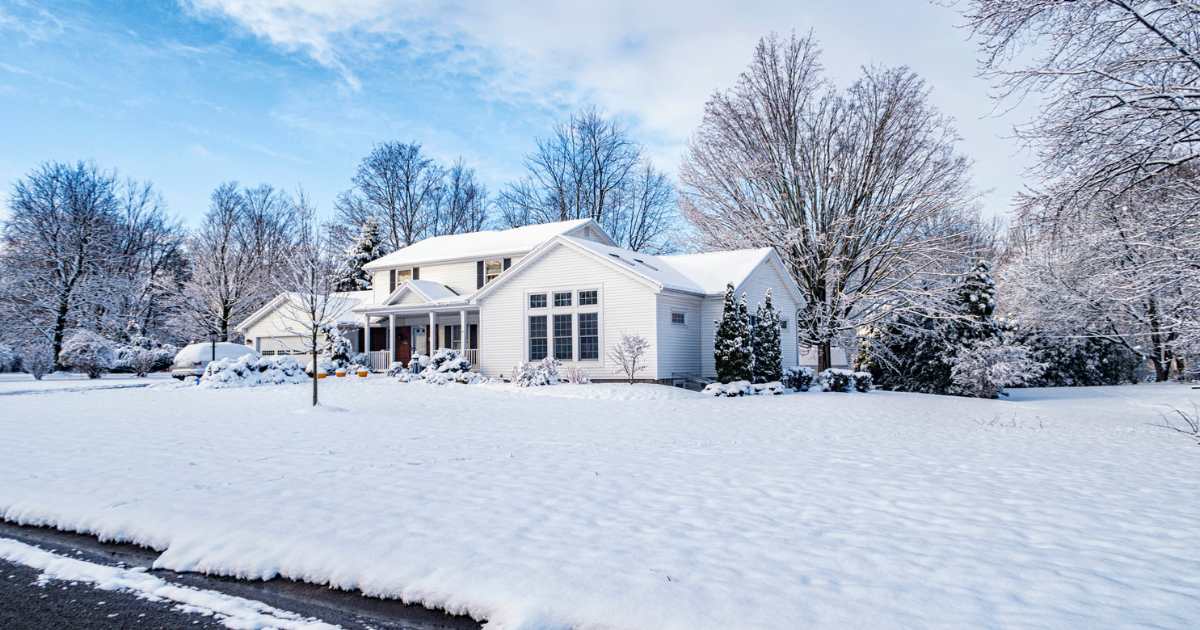Winter will be here before we know it.
Frozen pipes, ice dams, fallen trees.
The 3 most common cold-weather claims, but what can you do to prevent them?
Frozen pipes:
Generally, pipes that are exposed to frigid outdoor temperatures freeze more readily—such as hose bibs, swimming pool lines and water sprinkler lines. Pipes that run along exterior walls in your home with minimal insulation also tend to freeze more easily.
Regardless of where they are located, frozen pipes can carry significant consequences—including property damage from your pipes bursting, flooding and the potential for a disruption in water supply. With this in mind, here’s what you can do keep your pipes from freezing when temperatures drop.
- Insulate pipes in unheated interior areas, such as crawl spaces and attics.
- Wrap pipes in heat tape or thermostatically controlled heat cables.
- Open cabinet doors to expose pipes to warm air.
- Seal any leaks with caulk or insulation.
- Disconnect outdoor items such as hoses and faucets. Shut off these items completely using an indoor valve and allow the excess water to drain out.
- Trickle a little water out of your faucets periodically to keep water moving within the pipes.
- Keep your garage door closed if there is a water supply in there.
- Keep your thermostat set at the same temperature during the day and night.
- Do not set your thermostat lower than 55 degrees Fahrenheit when going on vacation. Ask someone to periodically check the temperature in your home while you are away.
How to Respond to Frozen Pipes:
If you turn on a faucet and no water or only a trickle comes out, your pipes may be frozen. Turn off the main water valve and keep the faucet on. Apply heat to the pipe by using an electric heating pad, hair dryer or portable space heater, or by wrapping the pipe in towels soaked in hot water. You should apply heat until you regain water pressure. If this does not solve the problem, contact a licensed plumber to inspect your pipes.
Ice dams:
Ice dams are caused by a combination of uneven heat loss from your home and wintry conditions re-freezing melted snow. This causes the roof to warm above freezing temperature, which allows snow to melt and then re-freeze before it reaches the roof’s edge.
If this cycle repeats consistently, an ice dam forms, and water collects behind it. As the water pools, it collects and can cause costly water damage. Follow these tips to prevent the formation of ice dams.
- Keep the attic well ventilated. According to the Department of Energy, one square foot of free ventilation opening is recommended for every 150 square feet of attic space.
- Seal air leaks to prevent warm air leakage from plumbing vents, junction boxes from ceiling fixtures and attic hatches.
- Keep the attic floor well insulated (between 16 and 22 inches of insulation) to minimize the amount of heat rising into the attic from below.
- Clean leaves and other debris from gutters before the first snow. This will help prevent ice buildup in your gutters.
- Consider using an ice shield under your shingles when your house is getting re-roofed.
- Use a roof rake to clear the snow above the gutter. Clear as much as three to four feet above the gutter to allow water to drain freely into the gutter.
- Consider hiring an energy specialist to evaluate the performance of your home and recommend some things you can do to minimize energy waste.
Watch for Icicles!
During cold winter months, the icicles on your home’s eaves may be a sign that a ridge of ice is forming at the edge of the roof. This ridge, also known as an ice dam, can prevent melting snow from draining properly.
If an ice dam forms, sprinkle a melting compound to break it up. Avoid using traditional rock salt, as it may cause further damage and faster deterioration of your gutters.
Fallen trees:
Winter wind and ice can badly damage trees, dropping large limbs or uprooting the trees altogether. While home policies generally do not cover trees themselves, they do cover the damage caused if one falls on a covered structure – including the cost to remove it from that structure.
If the tree falls and damages covered property, most policies cover the cost to “chop and drop” the tree off of the damaged property so that repairs can be made.
For example, a tree falls over and hits a roof, and is leaning on the house, “chop and drop” means they cut the tree so that it is not leaning on the house, but it is laying on the ground where it fell.
In that case most policies would also provide $500 to remove the tree from the premises. Each tree claim is different. If a tree fall has damaged covered property, like a roof or a fence, and the damages plus the removal of the tree will likely exceed the deductible, the customer should consider submitting a claim.









